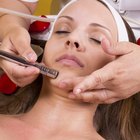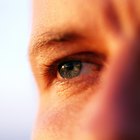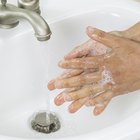
Jupiterimages/Stockbyte/Getty Images
PABA -- para-amino-benzoic acid -- is used in a variety of ways, including topically as a reflective agent in many commercial sunscreens and orally to darken the hair of the elderly and treat constipation and vitiligo, which is a loss of pigmentation of random spots on the skin, according to "Foundations of Nursing." Side effects of PABA vary depending on the duration of exposure, route of administration and dosage.
Liver Damage
When PABA is administered orally, it can have harmful effects on the liver, according to "Foundations of Nursing." According to "Introduction to Medical-Surgical Nursing," the liver is affected when PABA is consumed in amounts equal to or greater than 8g. When this amount of PABA is consumed, the liver loses its ability to function properly, which can ultimately lead to liver failure, according to "Foundations of Nursing." Liver failure leads to death without prompt medical care, according to "Introduction to Medical-Surgical Nursing."
Skin Abnormalities
"Clinical Dermatology" says that PABA can lead to a variety of skin abnormalities when applied topically, ranging from discoloration to cancer. Typically, PABA is applied topically when using sunscreen, according to "Foundations of Nursing." PABA protects against carcinoma but does not protect the skin from melanoma, according to "Clinical Dermatology." Additionally, PABA contributes to the release of oxygenated free radicals, which "Clinical Dermatology" says can lead to deepened skin pigmentation in the best of cases and skin cancer in the worst of cases.
Allergic Reactions
Like all chemicals, it is possible to be allergic to PABA, according to "Foundations of Nursing." Allergic reactions vary based about the amount, duration and route of exposure, according to "Introduction to Medical-Surgical Nursing." When applied topically, PABA can cause skin redness, irritation and itching, according to "Clinical Dermatology." When ingested orally, PABA can result in dizziness, gastrointestinal upset and respiratory distress, according to "Introduction to Medical-Surgical Nursing."
Related Articles

The Difference Between Retin A & Renova

Fraxel Laser Treatment Dangers

Homeopathy Cure for Stretch Marks

Chamomile Essential Oil Benefits

How to Reduce Acne Inflammation

Dimethicone Hazards

List of Retinoids

Definition of Skin Bleaching

What Is Aloe Good For?

Arnica for Acne

Possible Side Effects of Obagi

Long-Term Health Risks of Laser Hair ...

Tazorac Cream & What it Does for Acne

What Are the Benefits of Ashwagandha in ...

Chasteberry for Acne

Side Effects of Cosmelan

Can Borage Oil Help Acne?

Grapefruit Seed Extract for Melasma

Benefits of Shea Butter and Coconut Oil ...

How to Use Colloidal Silver to Kill ...
References
- “Foundations of Nursing”; Lois White, Gena Duncan and Wendy Baumle; 2010
- "Introduction to Medical-Surgical Nursing"; Adrianne Dill Linton; 2007
- "Clinical Dermatology"; Richard Weller, John A. Hunter, John Savin and Mark Dahl; 2008
Writer Bio
Leigh Wittman has been writing professionally since 2007. She writes primarily on health, career advice, outdoor pursuits and travel for various websites. Wittman is a licensed nurse and studied nursing at Arizona State University.
Photo Credits
Jupiterimages/Stockbyte/Getty Images